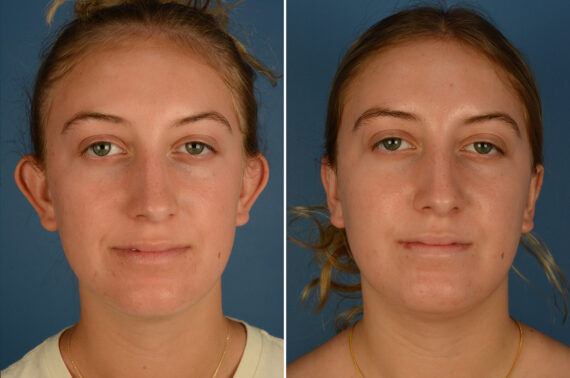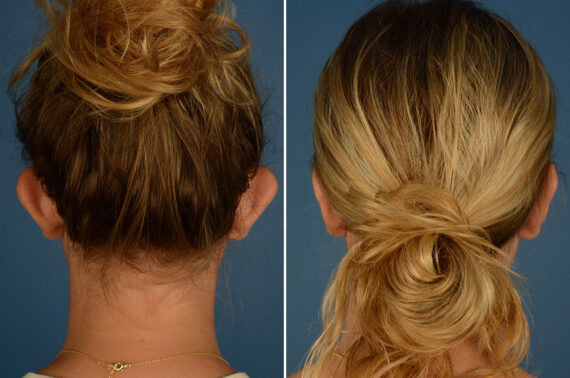Otoplasty, otherwise known as ear pinning surgery, is one of the most transformative cosmetic surgeries that not only improve a person’s appearance but also boost their self-confidence. An integral part of the procedure includes otoplasty recovery time, which deals with how long it takes for patients to heal post-otoplasty surgery.
The success of this procedure relies on multiple variables, such as the patient’s general well-being, following the surgeon’s directions, and the body’s ability to heal naturally. This article will guide what to anticipate during the healing period after otoplasty, with expert advice on optimizing your recovery and reaching your desired aesthetic outcomes.

Optimal Care for Post-Otoplasty Healing
- Expect discomfort and swelling. Elevate your head, use ice packs, and follow your surgeon’s pain management and dressing care instructions.
- Essentials Avoid physical activities and heavy lifting, stick to soft foods, and monitor for any concerns. Consult your surgeon if needed.
- Wear a headband, especially at night, to protect your ears and ensure proper healing.
- Attend follow-up appointments to monitor progress and address any potential issues.
- Follow a healthy diet, avoid strenuous activities, and protect yourself from extreme temperatures to speed up healing.
What to Expect Immediately After Otoplasty Surgery
After ear correction surgery, you may feel some pain or discomfort. Your surgeon will give you pain medication to help with this. Compression bandages will cover the surgical area to help it heal. During recovery, it is important to keep your head elevated and use ice packs to reduce swelling. Common immediate concerns include some discomfort, temporary swelling, and numbness.
Otoplasty Recovery Time
After otoplasty, most people can resume normal activities within a week or two. Recovery time depends on individual health and healing ability. It’s important to follow the surgeon’s instructions for a smooth recovery. These guidelines help promote healing and a quick return to daily routines.
The First Week of Recovery
After the first week, expect the initial swelling from the otoplasty surgery to go down. It’s common to have some mild pain, but the surgeon can change your pain medication if needed. Talk to your surgeon if you have any questions or worries about your recovery.
At this stage, it’s important to limit your physical activity and take plenty of rest to avoid any injury. Strenuous activity and heavy lifting are not recommended. You might also want to stick to softer foods to reduce movement and pressure in the ear area.
Is the Healing Process Painful?
The perception of pain varies from person to person, making it a subjective experience. In most cases, any discomfort encountered following cosmetic ear surgery can be effectively managed with the medication prescribed by your surgeon. Clear and open communication with your surgeon is pivotal during this phase, as it enables them to tailor pain management strategies to your specific needs, ensuring a comfortable and ultimately successful recovery journey that aligns with your individual comfort level and well-being.
Are You Ready For A Consultation?
You are about to take the first steps towards improving your appearance and enhancing your self-image by learning about contemporary plastic surgery.
Headband Use During Recovery
Following the surgery, the patient will be recommended to wear a headband to protect the incision area and ear cartilage, especially during nighttime to avoid any discomfort while sleeping. Consistently wearing the headband in the first few weeks is vital for the healing process and to achieve the desired results after otoplasty surgery.
Recurrences and Potential Complications
Cosmetic ear surgery is a generally safe practice, but like any surgical procedure, it carries some inherent risks. These risks may encompass the possibility of infection, allergic reactions to anesthesia, complications related to stitches, or an outcome that falls short of your aesthetic expectations. To ensure your well-being and address any concerns promptly, it is imperative to maintain regular follow-up appointments with your plastic surgeon in the post-surgery period, allowing for diligent monitoring of your progress and timely intervention if necessary.
Managing Incision Scars
Scarring is an inherent aspect of the body’s natural healing response. In the context of otoplasty surgery, the incisions are typically thoughtfully positioned to be discreetly tucked within the skin fold behind the ear, allowing them to remain inconspicuous. While some individuals may experience initial redness or concerns about the appearance of stitches, it’s important to understand that these issues tend to ameliorate over time as the healing process progresses. Consistent post-operative care and adherence to your surgeon’s recommendations can further contribute to the fading and blending of these scars, ultimately resulting in a more subtle and refined outcome.
Impact of Lifestyle Choices on Recovery
The choices you make in your daily life can significantly influence the pace and ease of your otoplasty recovery. Practicing caution by refraining from strenuous activities, safeguarding against extreme temperatures, and maintaining a nourishing diet can help expedite the healing process. By diligently adhering to your surgeon’s prescribed recovery plan, you can increase the likelihood of swiftly returning to your regular routine, all while enjoying the positive changes to your appearance brought about by the procedure.
Before & After Photos
* Each patient is unique and individual results may vary.
When to Resume Work and Exercises
The appropriate timing for resuming work or engaging in physical activities following ear pinning (otoplasty) hinges on the nature of your occupation and the intensity of exercise you plan to undertake. Typically, after 1-2 weeks, you may consider easing back into your routine; however, it’s of utmost importance to consult with your surgeon before embarking on any strenuous activities. Their professional guidance ensures that your reintegration into work and exercise aligns harmoniously with your individual healing progress, contributing to a smooth and safe recovery.
Aesthetic Goals of Otoplasty
Otoplasty, or ear correction surgery, not only brings about physical transformations but also holds the potential to elevate one’s psychological well-being and self-esteem. The procedure is not solely about achieving a more aesthetically pleasing look; it’s about instilling confidence and a positive self-image. By addressing concerns related to ear shape or size, otoplasty can empower individuals to embrace their appearance with renewed self-assurance, resulting in a holistic improvement in both their physical and emotional well-being.
Is Otoplasty the Ideal Choice for Enhancing Your Appearance?
Consulting with a qualified plastic surgeon is crucial to understand if otoplasty is the right treatment option for you. It’s not just about the surgical center or the surgeon’s proficiency but also your expectations and the realistic outcomes of the procedure that need to be considered.
The prospect of undergoing plastic surgery can be daunting, and it’s completely normal to have worries and questions about the process, especially the recovery time. Nevertheless, by having a thorough knowledge of what to expect, carefully following the surgeon’s instructions, and giving your body ample time to heal, you can look forward to beautiful, natural-looking ears. Remember that the journey doesn’t end when you leave the surgical center; it’s just as important to take care of your ears post-surgery as it is before your procedure. Dr. Agarwal and Dr. Holmes and their team are medical experts in this field and look forward to addressing your concerns and guiding you through a successful otoplasty journey.

